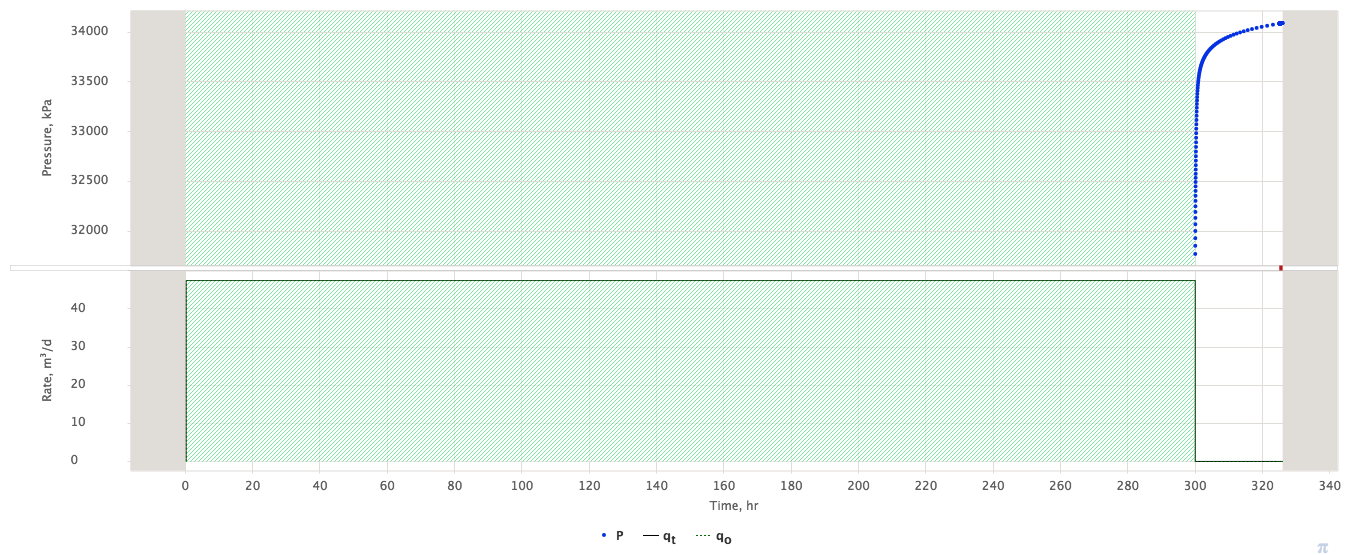Specific schematic of Pressure Test consisting of long-term shut-in, followed by FLOWING test (Drawdown / Injection) then followed by Build-up / Fall-off (see Fig. 1).
Interpretation of BUS in terms of formation pressure and formation transmissibility under the following (Horner) conditions:
...
both production
and shut-in period reach radial flow regime: , ...
The interpretation of Horner Test can be performed by conventional pressure diffusion model fitting.
But historically it was given a specific focus due to simplifications from using the Superposition Time concept, particularly when the following conditions hold true:In some cases when:
- both production and shut-in period reach radial flow regime: ,
- total duration of production and shut-in do not reach the
...
one can uses Horner model which is a simplified version of BUS interpretation procedure and based on the following pressure diffusion model:In this case one
| LaTeX Math Block |
|---|
| anchor | Horner_pwf |
|---|
| alignment | left |
|---|
|
p_{wf}(\Delta t) = p_e - \frac{q_t}{4 \pi \sigma} \, \ln \left( 1 + \frac{T}{\Delta t} \right) |
...
